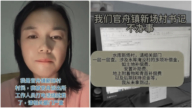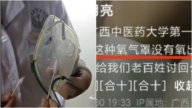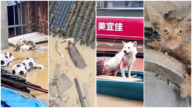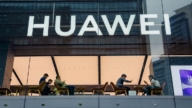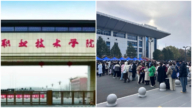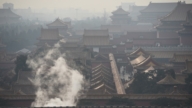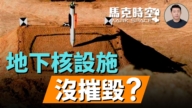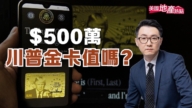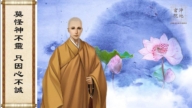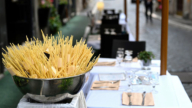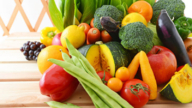【新唐人2012年1月7日讯】最近,大陆媒体系列报导【2011食品安全报告】,回顾了2011年中国一系列有毒食品,并深入探讨危害食品安全的因素﹔同时,中共当局食品监管部门的内幕也遭到披露。面对食品安全事件层出不穷,民众的安危到底谁来负责?
“哪类食品您最担心?”大陆媒体《南方周末》12月份发起的问卷调查显示,食用油排名第二,而“搜狐”网站的2011食品安全调查,食用油则是排名第一。媒体报导,中国每年有300万吨“地沟油”回到餐桌。
回顾2011年中国食品安全乱象,从千奇百怪的非人类食用回收油,到各式各样的有毒食品,民众就像生活在一个有毒的世界。
继2010年海南毒豇豆事件后,“避孕黄瓜”成为2011年蔬菜行业的“最毒”话题。紧接着还有“毒豆芽”、“毒韭菜”等。另外,农药残留、环境污染、重金属超标,也严重威胁蔬菜安全,而硝酸盐、亚硝酸盐含量过高等安全隐患一直被忽略。
中山大学公共卫生学院营养学系主任蒋卓勤:“亚硝酸盐对人体确实是有毒的,但是我们目前还没有发现,吃蔬菜导致硝酸盐的中毒事件,但是呢,不排除可能有一些慢性影响。”
也是保健食品检测中心品质负责人的蒋卓勤还表示,中国的食品生产是分散生产、分散销售。但是,不管如何都不该让有毒的食品进入人的肚子里。他认为,蔬菜使用农药、化肥这个问题还不大,目前最大问题应该是食品添加剂。
蒋卓勤:“最大问题反而是滥用食品添加剂,或者滥用非食品食用物质,放到食品里面去,这个可能是最大的问题,比如说,一些烧腊店、烧鹅啦、烧鸭,这个过期做法这种生产,滥用这些添加剂这一块。”
抗生素、添加剂让民众害怕。事实上,不止烧腊店,连做馒头的增白剂也令人担忧。上海市民接受《新唐人》采访时表示,中国人现在都生活在有毒的环境里。
上海市民童利亚:“现在我们的食品问题,不是说一年两年了,都好几年了,最简单的说,就是说我们中国吃的面粉,就是做馒头做包子的面粉,现在里面都要增加那种增白剂,这个问题我以前报纸上也看了,说他不抓呢,也抓了几个企业出来,老百姓的理解是,这些被他抓出来的企业,都是没有背景的,根本上没有解决问题,到现在还是这样,都几年了,那个增白剂它都是过量的。”
上海市民韩忠明:“政府在先前的监督,应该说不力,导致企业造假成功,最重要的是老百姓健康都得到了威胁,现在老百姓都是事后知道政府查出来,像许多的食品不安全,就是数字、质量标准都在造假。”
民众对食品安全监管体系和食品行业的信任越来越低。前不久,“思念”、“三全”、“湾仔码头”等大陆知名冷冻食品公司,都被检出“金黄色葡萄球菌”。随后,速冻面米食品安全国家标准发布,允许存在金黄色葡萄球菌。也就是说,速冻食品中,金黄色葡萄球菌将由“不得检出”变为“限量检出”。难怪消费者会说:又一个标准倒退了!
而监管食品安全第一线的官员被批评:连一头猪都管不好,民众问:“市面上究竟还有什么能吃?”
新唐人记者代静、黄容、薛莉采访报导。
*****************
Consumers: “Is There Still Edible Food on China’s Market?”
Recently, a special coverage by China’s media
reviewed the 2011 food safety issues.
The report looks at series of toxic foods,
and explores the factors that endanger food safety.
Meanwhile, inside stories of Chinese Communist Party’
(CCP) food regulatory system is disclosed.
Facing endless occurrences of food safety incidents,
who is to be held responsible for the public safety?
“What kind of food are you most worried about?"
asks a poll of Southern Weekly, where edible oils rank second.
While on the survey of food safety, initiated by Sohu.com,
the cooking oil tops the list as No. 1.
Media reported that each year, 3 million tons of swill-derived
cooking oils are being used in China.
China’s food safety chaos expanded in 2011. From recycled,
not-for-human consumption cooking oils to a wide range of toxic foods, the Chinese are like living in a toxic world.
Following Hainan poisonous bean incident in 2010,
the “contraceptive cucumber" tops the list of “most poisonous" vegetable in 2011 in China.
Later ensued “poisonous bean sprouts" and “poisonous leek,"
among others.
Moreover, pesticide residues, environmental pollution, heavy
metal contamination also seriously impact vegetables’ safety.
Yet high nitrate and nitrite levels and similar safety risks
have long been ignored.
Jiang Zhuoqin (Director, Nutrition Dept., Zhongshan Univ.):
“The nitrite is indeed toxic to humans.
So far, we haven’t found nitrate poisoning from vegetables.
But this doesn’t rule out the chronic effects it may cause."
A quality manager at a health food testing center, Jiang said,
China’s food has decentralized production and marketing.
But however operated,
toxic food should not be allowed for sale.
Jiang thinks the use of pesticides and chemical fertilizers
is not an issue yet. The biggest concern is the additives.
Jiang Zhuoqin: “The biggest issue is the food additives abuse.
In other words, abuse of non-edible substances in the food.
Like some roast-meat shops, when roasted goose or ducks are out-of-date,
they often ‘refresh’ them by using additives excessively."
Besides the antibiotics and additives that incite public panic,
the whitening agent used in steamed bread is also worrisome.
Shanghai residents say that the Chinese now live
in a toxic world.
Tong Liya (Shanghai resident): “China’s food safety issue
has been existing for many years.
To put it simply, whitening agent has been added in the flour.
The newspapers reported on it.
The authorities blamed some enterprises. But civilians found
the reason for the blame to be that none of those companies have connections with the authorities.
So the problem was not resolved essentially. It still remains,
and the use of whitening agent is still excessive."
Han Zhongming (Shanghai resident):
“The government’s regulation was poorly carried out.
However, it helped so many businesses
to make successful frauds.
The most important thing is that people’s health
has been under threat since.
Now the public cannot know,
until after a fraud case gets exposed.
Many foods are viewed as unsafe, for the figures
on food labels and the quality standards are false."
Food safety regulatory system and food industry in China
have gained the public’s lowest trust.
In some renowned frozen food brands, like Synear, Saquan,
Wanchai Ferry, were lately detected excessive bacteria.
After that, China’s National Food Safety Standard
on Quick Frozen Flour and Rice Products was released.
It stated that the presence of this particular bacteria,
staphylococcus aurous, is within the new permitted limit.
That is to say, for the frozen foods,
the criteria for staphylococcus aurous was lowered.
It is not surprising that the consumers say,
one more food safety criteria had retrogressed.
The CCP food safety supervision officials are criticized,
that “cannot even supervise feeding a pig.”
Consumers are worried, asking;
“Is there still edible food on China’s market?"
NTD reporters Dai Jing, Huang Rong and Xue Li




